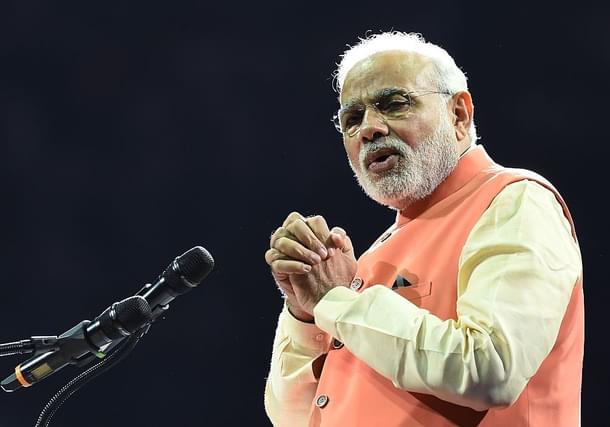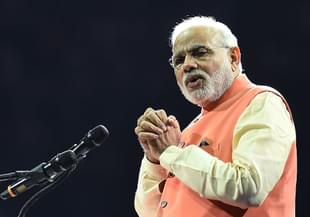Politics
Modi’s Critics On DeMo May Be Right For The Wrong Reasons; Here’s Why
R Jagannathan
Jan 05, 2017, 01:29 PM | Updated 01:28 PM IST
Save & read from anywhere!
Bookmark stories for easy access on any device or the Swarajya app.


Prime Minister Narendra Modi’s critics may, at long last, have scored a point on demonetisation (DeMo, for short). A Bloomberg report claims that 97 per cent of the demonetised notes had returned to the banking system by the deadline of 30 December. If true, Modi’s critics can claim moral victory, and ask whether inconveniencing millions of citizens and causing short-term economic losses to businesses and individuals was worth the upheaval.
This outcome was by no means certain, and if Modi’s critics turn out to be right when the Reserve Bank of India (RBI) finally releases it figures, it could be for the wrong reasons.
The critics were always bound to be partly right because DeMo’s short-term pain was visible from Day One, but the long-term gains – whether in the form of higher tax revenues or greater financial inclusion – have to be fought for. It is the missing short-term gain – from black money not returning to the system – that critics can use as a rotten egg to throw at the government.
The advantage Modi’s enemies have is that they have criticised almost everything he did since 2014. When you criticise 100 per cent of a man’s actions (or inaction in some cases), the chances of being right at least once are close to 100 per cent, too. No one can get everything right.
On DeMo, critics have pointed to the short-term negative impact of the move, with economic activity decelerating in many sectors, specially in the informal sectors and trade. But even the government did not dispute the reality of short-term pain in some sectors.
But when deposits of demonetised notes were surging all through November, they thought they could take Modi’s moral halo out by pointing out that black money was not slinking into the shadows as predicted. It was being laundered. They also pilloried the government for shifting the goalposts. If the initial justification for DeMo was tackling terror funding and reducing the stock of black money in the economy, by mid-November, the larger goal was about moving to a less-cash economy and bringing more people, both individuals and small companies, into the formal banking system.
The critics were helped by the fact that a few government spokesmen chose to talk about a possible bonanza of Rs 2-3 lakh crore for the government from money that would not return to the system.
But it is worth pointing out that even non-government commentators did not initially doubt this figure. Consider what Swaminathan Anklesaria Aiyar wrote towards end-November, when the surge in deposits was clearly visible: “…not all hoarders of high-value notes will be able to exchange or launder them by December-end. Nobody knows how large this un-encashed hoard will be. I suspect it may be 20 per cent of the total, worth Rs 3 lakh crore.”
In fact, most critics were quarrelling not over this figure, but whether this stock of unreturned old notes can result in a cash bonanza for the government after extinguishing the RBI’s liabilities on this count.
The speedy return of old notes may also be linked to two late initiatives of the government.
One is the Pradhan Mantri Garib Kalyan Yojana, under which undisclosed incomes could be put into bank accounts after paying 50 per cent tax and accepting a four-year freeze at zero interest on another 25 per cent of the balance. This scheme was legislated around early December, and notified around mid-December. This could have encouraged more people to deposit their black money into bank accounts before the 30 December deadline.
The second was Modi’s own directive to tax officials not to penalise those who declare higher incomes or more employees post-demonetisation. The Times of India quotes him as telling tax officials: “There will be no comparison with the past. Officials will not say take out the old accounts. I have told them no old post-mortem, otherwise no one will come to the mainstream. Ye afsarshahi (bureaucratic way) nahin chalegi.”
This too would have encouraged people to return to the straight and narrow.
Then, finally, there is the possibility of money being laundered. The Rs 25,000 crore surge in Jan Dhan accounts post-8 November, and the Rs 30,000-and-odd crore exchanged in the initial days of DeMo (before it was stopped) using proxies, would have enabled crores of black money to be laundered. Collusion between bank officials and black money holders – which led to huge seizures of new notes worth hundreds of crores – could have accounted for another large chunk of deposits of old notes in large amounts.
The simple takeout is this: there were several reasons why large amounts of demonetised notes did not stay out post 8 November. So it would be unwise to conclude that just because the overwhelming chunk did come back, either due to the ingenuity of crooks and/or the government’s own actions to entice this money back in, the DeMo effort was a wasted effort. That’s why the critics are half-right.
But Modi’s critics have also failed to note another fallout: the poor, despite facing hardships without easy access to cash, have seen the move largely in a positive light. The latest India Today-Axis survey of Uttar Pradesh voters showed that more than three-quarters (76 per cent) of those polled supported demonetisation. And more than half (51 per cent) expected DeMo to help curb black money.
Whatever the short-term economic consequences, Modi’s critics are wrong on one point: that DeMo will cost Modi politically.
DeMo may have been poorly executed and may possibly have had unrealistic and ill-defined short-term goals, but the politics of the move has probably paid off. In the months ahead, as the cash crunch abates, DeMo will cease to be a negative for Modi.
His critics are likely to be proven wrong on DeMo being his Waterloo. Or Panipat.
Jagannathan is former Editorial Director, Swarajya. He tweets at @TheJaggi.





